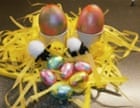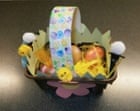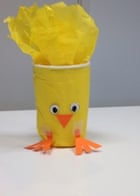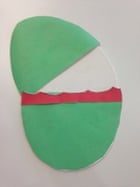Все записи автора AnreeMarsell
Твит от Реморенко Игорь (@Remorenko_Igor)
Реморенко Игорь (@Remorenko_Igor) 28.03.15, 12:24 Всё прогрессивное человечество на дне открытых дверей в #МГПУ

Твит от Учительская газета (@ug_tw)
Твит от Универсариум (@universariumorg)
Универсариум (@universariumorg) 28.03.15, 12:03 Подборка бесплатных онлайн-курсов в апреле от #Универсариум
Приглашаем поддержать программу города Москвы “Активный гражданин”
Дмитрий Ливанов провел совещание с главами региональных органов управления образованием
27 марта в Мариинском дворце Санкт-Петербурга в рамках VI Петербургского образовательного форума состоялось Всероссийское совещание руководителей органов исполнительной власти субъектов Российской Федерации, осуществляющих управление в сфере образования.
Глава Минобрнауки России рассказал коллегам из региональных органов управления образованием о необходимых мерах по дальнейшему увеличению зарплат педагогов, подготовке к празднованию 70-летия Победы, достижению 100% доступности дошкольного образования, совершенствованию контроля за качеством школьного образования.
Дмитрий Ливанов особо подчеркнул, что воспитанию в школе сейчас уделяется повышенное внимание. «Система образования уже включилась в работу по подготовке к празднованию 70-летия Победы, – отметил Министр. – Мы готовы поддержать интересные инициативы регионов в этом направлении, принять участие в их мероприятиях».
Дмитрий Ливанов рассказал, что 8 апреля в режиме видеоконференцсвязи Министерство будет проводить «Урок Победы» с прямыми включениями из Москвы, Санкт-Петербурга, Волгограда, Севастополя, Курска. Таким образом будет дан старт месячнику Победы в системе общего образования. «Мы рассчитываем, что в нем примут участие все образовательные организации России», – сказал Министр.
Одной из ключевых тем совещания стало обсуждение государственной итоговой аттестации. Дмитрий Ливанов сообщил, что сейчас обсуждается вопрос о поэтапном увеличении выпускных экзаменов в 9 классе. В 2016 году предложено увеличить их число до четырех, к 2018 году – до пяти, в 2020 году – до шести.
«На мой взгляд, помимо русского языка и математики, обязательным в 9-м классе мог бы стать и экзамен по иностранному языку – тем более что он будет обязательным с 2020 года в 11-м классе», – отметил глава Минобрнауки.
Также Министр сообщил, что с 2017 года оценки за экзамены за 9-й класс планируется выставлять с помощью федеральной шкалы, и они будут влиять на оценку в аттестате.
«Крайне важно, чтобы в 2015 году единый экзамен прошел максимально объективно, на высоком организационном уровне», – подчеркнул Дмитрий Ливанов. Министр призвал региональных коллег со всей ответственностью отнестись к решению этой задачи. «В прошлом году был предпринят ряд мер для обеспечения честности и объективности экзамена, это во многом удалось, и теперь мы не должны опускать планку. Проведение ЕГЭ в феврале этого года, а также досрочная волна показали, что со стороны регионов еще не все организационные вопросы решены», – сказал Министр.
В 2014/2015 учебном году впервые после долгого перерыва 11-классники написали выпускное сочинение – по его результатам будут подготовлены методические рекомендации, которые, в том числе, будут направлены на совершенствование преподавания литературы в школе.
Дмитрий Ливанов также рассказал о том, что с 2016 года предполагается начать апробацию системы федеральных контрольных работ, которые давали бы единую и непредвзятую картину качества образования на промежуточных этапах обучения, а не только в 9-х и 11-х классах. «Это позволит детям привыкнуть к ситуации экзамена и избегать лишних стрессов на ГИА и ЕГЭ, а педагогам поможет при необходимости скорректировать процесс обучения, подтянуть отстающих», – отметил Министр.
Также Дмитрий Ливанов обратил внимание руководителей органов исполнительной власти субъектов РФ, осуществляющих управление в сфере образования на то, что на 1 марта 2015 года средний показатель доступности по стране дошкольного образования составил около 95% и в соответствии с указом Президента РФ осталось 9 месяцев для обеспечения 100% доступности дошкольного образования для детей от 3 до 7 лет. Министр рекомендовал регионам усилить работу по данному направлению и к концу 2015 года сделать все необходимое для создания 350 тыс. мест для дошкольников.
На совещании также рассматривался вопрос об увеличении заработной платы педагогов.
«В 2015 году в сложных экономических условиях мы должны обеспечить сохранение достигнутых результатов по увеличению зарплаты педагогов дошкольного и общего образования. Это можно сделать, в том числе, за счет пересмотра траектории повышения зарплат педагогов дополнительного образования детей, педагогов СПО, допустив некоторое снижение целевых соотношений, но сохранив номинальный уровень зарплат этих категорий работников. Педагогическая профессия должна оставаться привлекательной, в педагогические вузы должны идти хорошо подготовленные абитуриенты, а на работу в школы – лучшие выпускники педагогических вузов», – резюмировал Министр.
Британия: недобросовестные исследования в рамках гранта (ENG)
I’ve never met a researcher who had anything good to say about the soul-destroying process of applying for grants. But for all that’s bad, I used to like that funding was so competitive.
Peer review by an international panel prevents duplication, I thought, and funding bodies being so selective about where their money goes must mean that resources are channelled into research with real potential. It didn’t take long to realise this isn’t the case.
The same organisations that make it next-to-impossible to get a grant can be ridiculously laidback about how their money is spent once they’ve signed it over, so it’s probably unsurprising that I’ve seen so many grants misappropriated.
The story of my PhD is far from unique. The project was novel and exciting, and I already had several awards to my name by the time I started, so, unusually for a PhD student, I could bring in my own funding. Then my principal investigator (PI) had another idea, but this one wasn’t his best. No one would fund it and he had a hard time recruiting anyone to take it on. But eventually he “found the money somewhere”, and student Z joined the lab.
Whenever I logged into the orders system I’d see my unique grant code next to orders for student Z’s project – something I thought was particularly wrong as my grant was from the same medical charity that had refused to fund student Z.
With a year left to go, my grant money ran out. I could only continue because I was given another grant code and told to keep quiet about it – in much the same way as, I imagine, student Z was told to keep quiet when she was given mine.
The stories are endless, but we keep quiet. The department in a well-respected university where PhD students’ travel fellowships are used by senior staff. A fellow PhD student in another highly prestigious university, who earned her own grant, was told on her first day that the PI was splitting the grant between her and the other new student who couldn’t get funded. The new student left after a year with nothing when the money ran out: she barely finished.
We moan to each other, but can’t do anything about it, because this is what happens in our field – molecular biology. Budgets agreed for one project are bled dry to meet whichever needs the PI is prioritising, including blind alley research and ego projects – projects too scientifically unsound to merit being funded in their own right.
When one grant runs out, the next one is similarly mismanaged to meet the costs that should have been met by the first grant. It’s spending future earnings on credit, borrowing from one trust to repay another. It can only work for as long as there’s another grant coming in.
This doesn’t always come down to a wilful misappropriation or a moral failing. Unfortunately, a lot of people with impressive publications turn out to be incompetent managers of finances and clueless when it comes to administration. To put large sums of money into the hands of people like that is madness.
Grant applications need to look beyond publication records and start asking for details of management as well as research experience. They need to ask about the administrative supports available to the research team as well as the technology available in their labs.
It’s in the best interests of funding bodies to make sure their money isn’t being used to pay for projects they themselves deemed unworthy of investment. PIs have a reputation for being difficult and refusing to follow the rules, but they need money to keep their labs afloat.
Funding bodies could very easily prevent grants being mismanaged by issuing “fines”, withholding part of the next instalment, or in severe cases, blacklisting certain PIs for a set time period or permanently, depending on how far the PI has strayed beyond what it was agreed to finance in the first place.
When all’s said and done, the funders may be the only people a senior academic will listen to.
Может ли быть у ребенка несколько матерей?
Пасхальные идеи от британских коллег (ENG)
Whether you’re covering eggs with a coat or two of paint, making handmade cards or decorating bonnets, Easter is a time for arts and crafts in school. Getting glue and glitter everywhere – and filling your classroom with chicks and bunnies – is a staple of the season.
But for teachers and parents, getting everything together in time can be stressful. The bank holiday weekend begins on Good Friday (3 April), so we’ve pulled together a last-minute guide for teachers preparing their class celebration. Below are some fun ideas for things to try with your students. Follow our crafty tricks to give your Eastertide lessons a lift:
Bunny mask

What you need:
2 sheets of white A4 card
1 pink piece of card
Glue stick
Stapler
Clear tape
Scissors
Black pen
First make the headband by cutting two strips (2.5 inches wide) from the A4 white card. Glue the ends of the strips together to make a ring shaped headband. This will fit an adult’s head so cut shorter strips for a child. If you need extra support use staples to hold it all together. Cover the sharp staple-edges with clear tape.
Use the remainder of the first sheet of card for the nose and cheeks. Cut out a Y shape and two speech bubbles. These will be glued together to make the nose and cheek section. Don’t forget to cut out some bunny teeth.
For the ears, fold the second piece of white card in half and cut out a large tear-drop shape lengthways. Do the same with the pink card but make the tear-drops slightly smaller so they sit inside the white ones. For the nose cut out a heart or circle from the pink card.
Glue it all together. The nose should be the last thing you put on so it covers the rough edges of the cheeks and teeth. Once dried, use a pen to draw on whiskers. Eyes can also be added for more of a caricature-type look.
TWIST: Replace the card ear inserts and nose with pink felt and use pipe cleaners for whiskers.
Animal egg painting
Eggs
Poster paint
An old sponge
Blue Tack

Add the eggs to a pan of water (an adult will need to do this). When it starts to boil, reduce the heat and simmer for 10 minutes. When the time is up, place the eggs into a bowl of cold water.

Once the eggs are cool to the touch, start painting. For ease, sit them on some Blu-Tack (or an old egg cup, but remember to let the top half dry before turning it to paint the bottom) to stop them falling over.
A fun activity from Arkive involves students decorating the egg with their favourite endangered animal’s face. Students can present their egg to the class and explain why they chose that species.
Egg painting with a brush can be quite tricky. Cutting out shapes from an old sponge and dabbing paint over the surface of the egg is much easier and creates a nice mottled look.
TWIST: Use food colouring instead of paint to dye your eggs.
Easter egg hunt basket

Brown plastic mushroom punnet
Paint
Various coloured A4 card (four different sheets is enough)
Yellow tissue paper
Scissors
Glue stick
Stapler
Cut a one-inch wide strip of A4 card lengthways to make a handle for your punnet. Decorate it using the paint. Once dry, staple each end of the strip to the inside long edge of the punnet.
Using green card and scissors, make some grass fringing and glue it to the inside of the punnet (covering the sharp edges of the staples). Use the remainder of the card to make flowers, which should be glued to the outside of the punnet.
Finally, shred the tissue paper and use it to make a bed of hay for your painted eggs, chicks, sheep and chocolate eggs.
Chicks made from paper cups

Paper cup
Yellow tissue
White card
Black pen
Orange card
Grab a cup and wrap it with yellow tissue so it’s completely covered. You can stick it down using sellotape or glue. Next, make your chick’s eyes by cutting out thick white card and drawing pupils with a black marker. Stick them on with glue and then cut out a triangle on orange card for the nose. For the feet, cut out Y shapes and then make little cuts in them for toes. Once you’ve done this, stuff some tissue in the top to create a feathered effect.
Easter cards

Colourful card
Egg template
Coloured pens
This makes a great card for your students to take home. Cut out an egg template twice, using two different bits of card. Cut one of your egg shapes in two. Glue these onto the whole egg template, using one as the top and one as the bottom. This should make it appear as if the egg is half open (as shown in the picture). In the gap, draw a chick. Add a bit of decoration with flowers.
Планируется организовать самый большой урок в мире (ENG)
Plans have been revealed for the world’s largest ever lesson, to take place this autumn.
Supported by TES, the project will see schools around the world take part in the same lesson during one day at the end of September. The lesson will aim to educate students about the United Nations’ (UN) Sustainable Development Goals (SDGs).
The World’s Largest Lesson, delivered in partnership with Unicef, TES and Education International, forms a key part of the Project Everyone initiative, let by the celebrated writer and film director Richard Curtis.
Calling on the expertise of teachers to develop classroom resources for the lesson, Project Everyone has launched a competition that invites teachers to submit exciting lesson plan ideas about the SDGs to a special area of the TES website.
The winning lesson ideas will be those that are most highly rated by other teachers. Winners will have their lesson plans published as a set of learning resources, which will then enable teachers to craft a relevant lesson on the SDGs for their pupils when they take part in the project.
One winning teacher will be invited, along with their school, to have a filmed lesson event with a visiting celebrity.
“The World’s Largest Lesson will be the biggest collaborative education project the world has ever seen,” Mr Curtis said. “By working in association with TES and Education International, Project Everyone are drawing on the unique creativity that the teaching community have in building understanding of difficult issues amongst children.”
To mark the launch of the project, Mr Curtis will feature in the My Best Teacher column in tomorrow’s TES. In it he remembers the influence of James Morwood, a classics teacher at Harrow school, who ignited his love of writing and the theatre.
“It’s not an exaggeration to say the start of everything I do now was thanks to James,” Mr Curtis explains.
The project will be supported by a short animated film by Sir Ken Robinson, which will explain why the goals exist.
Подробнее о проекте: click here.
